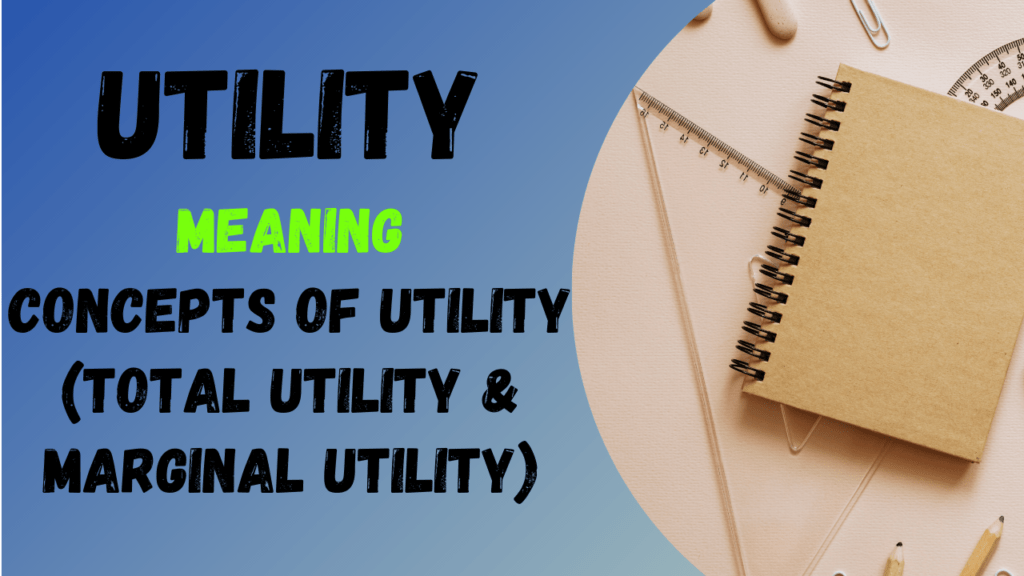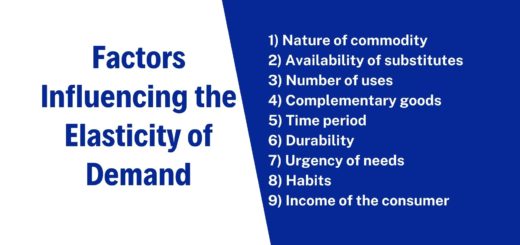Utility in Economics – Meaning & Concepts (Total Utility, Marginal Utility) | Micro Economics
Table of Contents
Utility in Economics

What is utility in Economics?
(Meaning of utility in economics)
A consumer usually decides his demand for a commodity based on the utility (or satisfaction) that he derives from it.
What is utility? Utility is the capacity of a commodity to satisfy human wants. In other words, utility is the want satisfying power of a good. The more the need for a commodity or the stronger the desire to have it, the greater is the utility derived from the commodity.
The utility is subjective. Different individuals can get different levels of utility from the same commodity. For example, someone who likes chocolates will get a much higher utility from chocolate than someone who is not so fond of chocolates.
Also, the utility that one individual gets from the commodity can change with change in place and time. For example, utility from the use of a room heater will depend upon whether the individual is in Ladakh or Chennai (place) or whether it is summer or winter (time).
- Microeconomic Definition | Historical Review of Microeconomics
- Scope Or Nature of Microeconomics
- Exceptions of Law of Diminishing Marginal Utility
- Criticism of Law of Diminishing Marginal Utility
Concepts of Utility
The following are the two main concepts of utility:
1) Total Utility (TU):
Total utility refers to the aggregate of utility derived by the consumer from all units of a commodity consumed. It is an aggregate of utilities from all successive units of a commodity consumed.
2) Marginal Utility (MU):
Marginal utility refers to the additional utility derived by a consumer from an additional unit of a commodity consumed. In other words, it is the addition made by the last unit of a commodity consumed.
Formula explaining the relationship between total utility and marginal utility :
TU = TU = ∑ MU or
TU = MU1 + MU2 + MU3 ……………. + MUn
MUn = TUn – TU(n-1)
Where TU = Total Utility
MU = Marginal Utility
MU1, MU2, MU3 = Marginal Utility of each unit.
MUn = Marginal Utility of nth unit.
TUn = Total Utility at nth level.
TU(n-1) = Total Utility at previous level.
Relationship between Total Utility and Marginal Utility:
Marginal utility derived from various units of a commodity and its total utility are interrelated. This can be easily followed by the hypothetical example given in the table below.
| Unit of a commodity | TU Units | MU Units |
| 1 | 10 | 10 |
| 2 | 18 | 8 |
| 3 | 24 | 6 |
| 4 | 28 | 4 |
| 5 | 30 | 2 |
| 6 | 30 | 0 |
| 7 | 28 | -2 |
The above table explains the relationship between total utility and marginal utility.
On the basis of the table, Total utility and Marginal Utility curves (TU and MU) can be derived with the following diagram.

TU Curve = Total Utility Curve
MU Curve = Marginal Utility Curve
The X-axis measures the units of the commodity consumed while Y-axis indicates the figures of total and marginal utility. The above Figure shows that the total utility curve slopes upwards whereas the marginal utility curve slopes downwards. The marginal utility curve shows zero and negative levels of marginal utility whereas
total utility curve shows maximum and constant total utility level.
1) Total utility and marginal utility of the very first unit of x consumed, are the same.
2) As the consumer consumes further units of x, the total utility increases at a diminishing rate and marginal utility goes on diminishing.
3) At a particular stage, total utility reaches its maximum and remains constant whereas marginal utility becomes zero. This is called the point of satiety. (TU highest, MU = 0)
4) After this point, any additional unit consumed further results in a decline in the total utility, while marginal utility becomes negative.
5) After reaching the point of satiety, a rational consumer should stop his consumption since the maximum limit of satisfaction is reached and there is no addition to total utility by any further increase in the stock
of a commodity.
6) Consumption beyond the point of satiety transforms satisfaction into dissatisfaction. In other words, a consumer starts experiencing the ill effects of consumption.


